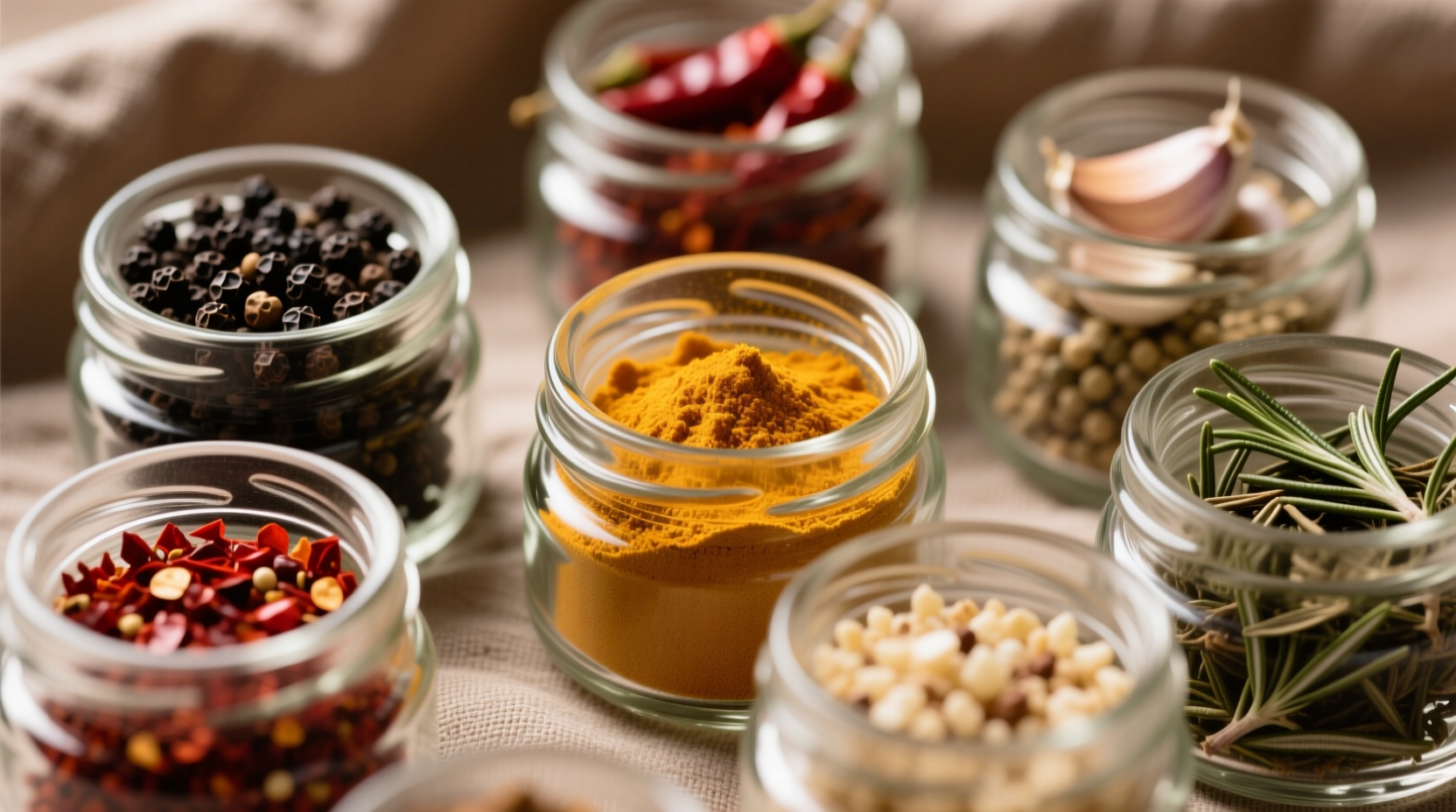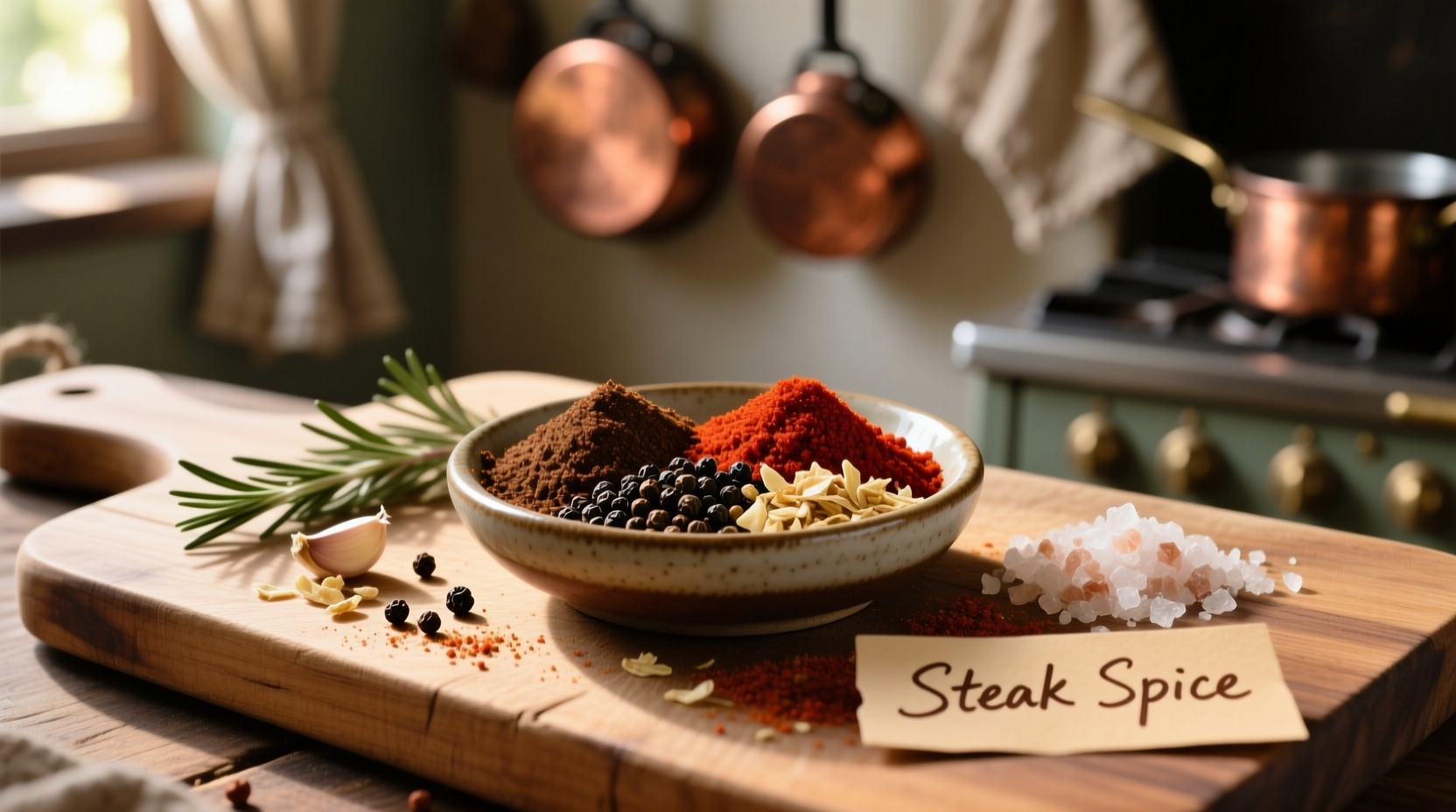Ever wondered what gives your steak that perfect crust and depth of flavor? Understanding steak spice composition isn't just about listing ingredients—it's about knowing how each component interacts with beef's natural flavors to create a memorable dining experience. Whether you're selecting a commercial blend or crafting your own, knowing what's inside helps you make informed choices that elevate your cooking from ordinary to exceptional.
The Essential Building Blocks of Steak Spice
At its foundation, steak spice relies on a carefully balanced quartet that forms the backbone of most blends. These ingredients work synergistically with beef's natural umami compounds:
- Coarse salt (typically 40-50% of blend) - Penetrates meat fibers while enhancing natural flavors
- Coarsely ground black pepper (20-30%) - Provides aromatic heat that complements beef's richness
- Garlic powder (10-15%) - Adds savory depth without burning like fresh garlic
- Onion powder (5-10%) - Contributes subtle sweetness and complexity
According to culinary research from the Culinary Institute of America, this foundational combination creates a Maillard reaction catalyst that develops complex flavor compounds when seared. The coarse texture of these primary ingredients ensures proper adhesion to meat surfaces while allowing controlled flavor release during cooking.
Flavor Enhancers: Beyond the Basics
While the core ingredients provide structure, secondary components add distinctive character to steak spice blends. These elements typically constitute 5-15% of the total blend and vary significantly based on regional preferences and culinary traditions:
- Paprika (sweet or smoked) - Contributes color and earthy sweetness
- Cayenne pepper - Adds controlled heat (used sparingly at 1-3%)
- Dried herbs (thyme, rosemary, oregano) - Introduce aromatic complexity
- Sugar (brown or white) - Promotes caramelization (5% or less)
- Mustard powder - Enhances browning and adds tang
The flavor chemistry behind these additions matters significantly. As explained in On Food and Cooking by Harold McGee, compounds in paprika like capsanthin interact with beef's myoglobin during cooking, creating more complex flavor molecules than either ingredient would produce alone. This scientific understanding helps explain why certain combinations work better than others.

Regional Variations in Steak Spice Formulations
Steak seasoning isn't one-size-fits-all—different culinary traditions have developed distinctive approaches based on local ingredients and flavor preferences. Understanding these variations helps you select or create blends that match your desired flavor profile:
| Region | Signature Ingredients | Flavor Profile | Best For |
|---|---|---|---|
| American | Coarse salt, pepper, garlic, onion, paprika | Robust, savory, slightly sweet | Grilled ribeyes, strip steaks |
| Argentinian | Coarse salt, oregano, garlic,少量辣椒粉 | Herbaceous, clean, moderately spicy | Asado-style grilled meats |
| French | Coarse salt, pepper, thyme, bay leaf, parsley | Earthy, aromatic, subtle | Pan-seared filet mignon |
| Texas | Coarse salt, pepper, garlic, cumin, chili powder | Smoky, earthy, moderately spicy | Smoked brisket, grilled steaks |
This regional diversity reflects centuries of culinary evolution. The USDA's National Nutrient Database confirms that regional variations often respond to local climate conditions—drier regions traditionally incorporate more preservative spices like garlic and onion, while coastal areas favor simpler salt-and-pepper blends that complement naturally briny flavors in locally raised beef.
Commercial vs. Homemade: Making the Right Choice
When deciding between store-bought and homemade steak spice, consider these practical factors:
Commercial Blends
Pros: Consistent quality, convenient, often contain anti-caking agents for better storage. Reputable brands like McCormick and Lawry's follow strict formulation standards documented by the American Society for Testing and Materials.
Cons: May contain fillers like maltodextrin or anti-caking agents you'd prefer to avoid. Some commercial blends use finer grind sizes that don't adhere as well to meat surfaces.
Homemade Blends
Creating your own steak spice offers customization and freshness advantages. Here's a professional chef's basic formula that yields approximately ½ cup:
- 3 tablespoons coarse sea salt
- 2 tablespoons freshly cracked black pepper
- 1½ tablespoons garlic powder
- 1 tablespoon onion powder
- 1 tablespoon smoked paprika
- 1 teaspoon cayenne pepper (optional)
- 1 teaspoon dried thyme
Mix thoroughly in a glass container and store in a cool, dark place for up to 3 months. For optimal flavor, toast whole peppercorns and grind them yourself before mixing—this preserves volatile aromatic compounds that dissipate quickly in pre-ground pepper.
Application Techniques for Maximum Flavor Impact
Knowing what's in steak spice matters less than understanding how to use it effectively. Professional chefs follow these evidence-based techniques:
- Timing matters: Apply salt-based blends 45-60 minutes before cooking to allow penetration, but add delicate herbs just before searing
- Moisture control: Pat meat completely dry before seasoning—water creates a barrier that prevents proper adhesion
- Pressure application: Press seasoning gently but firmly into the meat surface to ensure even coverage
- Temperature consideration: Use sugar-containing blends only for moderate-heat cooking to prevent burning
Research published in the Journal of Food Science demonstrates that proper seasoning application can increase flavor compound development by up to 37% during the Maillard reaction phase of cooking. This scientific approach separates good steaks from extraordinary ones.
Avoiding Common Steak Seasoning Mistakes
Even with the perfect blend, improper usage can undermine your efforts. Watch for these frequent errors:
- Seasoning too close to cooking time with salt-heavy blends (prevents proper penetration)
- Using fine-grind spices that burn easily at high temperatures
- Applying too much cayenne or other hot spices that overwhelm beef's natural flavor
- Adding wet ingredients like fresh garlic that create steam instead of sear
- Seasoning only one side of the steak
For best results, remember that steak spice should enhance—not mask—the quality of your meat. High-grade beef needs less aggressive seasoning than lower-quality cuts that require more flavor compensation.











 浙公网安备
33010002000092号
浙公网安备
33010002000092号 浙B2-20120091-4
浙B2-20120091-4